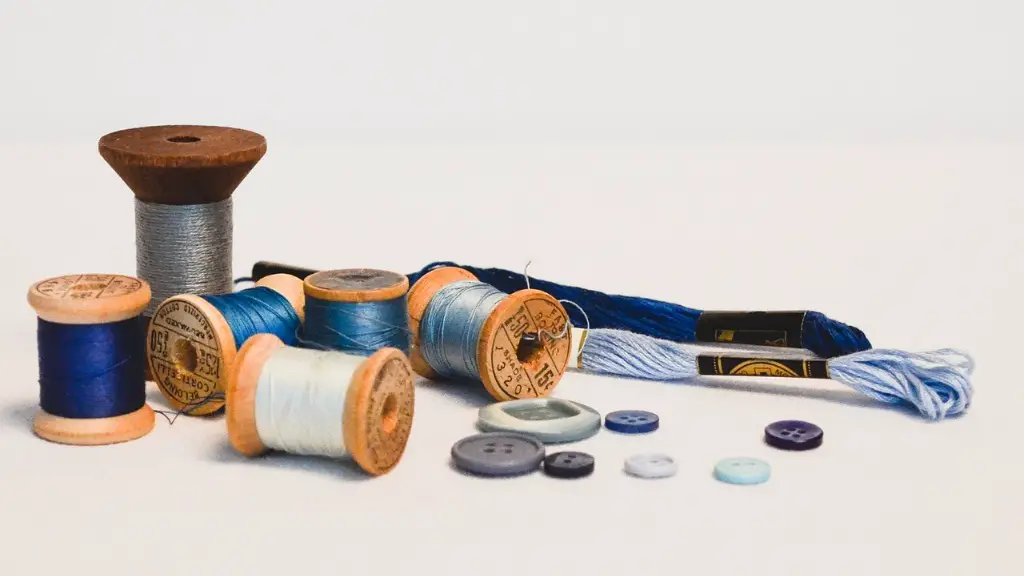It was back in 1846 when Elias Howe shook the world with his groundbreaking invention of the sewing machine. Born in Spencer, Massachusetts in 1819, Elias Howe had a tough childhood and he worked mainly odd jobs until a fateful chance encounter with a machine sent him on a lifelong journey to becoming one of the greatest inventors of all time.
Howe struggled with a series of bad investments as a young man and much of his early life was spent struggling to make ends meet. He worked as a watchmaker’s apprentice and then later as a part-time carpenter. His luck changed one day when he was sent to repair a broken spinning wheel and upon seeing a machine used to repair the wheel he began to ponder the possibility of creating a sewing machine.
With the advent of the industrial revolution, the amount of clothing being produced was growing exponentially, but it was still taking a great deal of time to produce each item of clothing. Inventors had been attempting to create a sewing machine for decades prior to this, but nobody had worked out how to simultaneously create a lock stitch.
It was here that Howe saw his opportunity; he knew that if he could discover a way to make a lock stitch consistently and quickly, then he could transform the world of clothing production. He abandoned his carpentry work and constructed a prototype machine using wood, metal and wire. Initially, he was testing his design upon gloves and pockets, and a thin strip of leather was his sample material to make the lockstitch.
Despite being able to make the lockstitch, Howe’s machine was plagued with a series of issues, and the time it took to make an item of clothing was simply too long. Howe continued to refine his machine and after a few years and a series of redesigns, he had finally cracked the puzzle and his machine was ready for the public.
In 1846, Elias Howe was granted his first patent and shortly afterwards, the first commercial model of the modern sewing machine was manufactured. Soon after, the machine went into mass production and the world of clothing production was changed forever.
Current Impact on Clothing Industry
Elias Howe deserves to be remembered as one of the great inventors of the modern age; without his invention the global clothing industry could not have grown to its current size. In the past 175 years, the garment industry has seen an immense rise in production capabilities, and this can largely be attributed to Howe’s invention and its continuous refinement over the last two centuries.
Today an average clothing factory is able to produce hundreds of garments a day due to the efficiency of the modern sewing machine, and the variety of sizes, shapes and designs of clothing on sale today are due in no small part to the effects of the sewing machine. Off the back of the machine’s success, the fashion industry has been able to grow and evolve into the trillion dollar industry we identify with today, with the likes of Coco Chanel, Donatella Versace and Jean Paul Gaultier being household names due in no small part to the success of your invention.
Modern machinery and technology have improved upon Howe’s original design to a significant extent, with industrial fabric cutting machines, automated pattern making machines and other variations being commonplace in clothing production. All of this is thanks to the innovation of Elias Howe and his desire to make the world a better place.
Elias Howe’s Legacy
Elias Howe deserves to be remembered as one of our greatest inventors and his influence continues to be felt in the current day clothing industry. Despite his invention being fundamental to the development of the global garment industry, Howe himself only received a small portion of the profits; his patents were sold in 1854 and he died penniless in 1867. His legacy however, continues to live on and it is with his invention that the global clothing industry has gone from strength to strength in the last 175 years.
Since Howe’s death there has been a tremendous amount of research on his life and work. Scholars continue to study his work in order to gain a greater understanding of the industrial revolution and its long-term impacts upon the global fashion industry. His invention serves as a reminder of what can be achieved through innovation, and it is without a doubt his legacy that has allowed the global garment industry to reach the heights it has today.
The Future
It is clear that Elias Howe’s life and work has had a tremendous impact upon the modern world; from automation to the rise of the global fashion industry, Howe has changed the world more than many people could ever imagine. Moving forward, it is likely that the sewing machine will remain an integral part of the clothing industry and the innovations made by Howe will continue to shape the way we dress.
However, the future of the sewing machine and the clothing industry is not so clear-cut; intelligent machines have been introduced into the industry and we are seeing manufacturers reducing manual labour drastically. The industry is also under increasing pressure to reduce its environmental impact, leading to a trend of manufacturers outsourcing production to countries with less stringent labour laws and environmental protection.
These issues mean that the future of the garment industry is uncertain, but the impact and legacy of Elias Howe may never be forgotten. The influence of his invention is felt around the world and its success has allowed the garment industry to reach new heights that would not have been possible without him.
Technology and Innovation
Due to the rise of technology and automation, the industry has seen an immense rise in efficiency and productivity over the last two centuries. Companies now use digital technologies such as 3D printing, automated cutting machines and specialised computer software in order to increase the speed and accuracy of garment production.
Elias Howe’s invention paved the way for the technology we have today, and it is his disruptive innovation that allowed the global fashion industry to reach the heights it has today. Without his vision and ambition, the garment industry would be a much different place and we would not have the amazing clothing technology and breath of product designs we have come to expect in today’s market.
Today, the innovation of Elias Howe continues to be acknowledged around the world; his invention transformed the garment industry and changed the course of history, and he deserves to be remembered as one of the greatest minds of all time.
Competition and Market Trends
Time and technology have allowed the clothing industry to expand massively over the last two hundred years, leading to an incredibly competitive market and consumer base. The success of any product or clothing range is now almost entirely reliant on the customer and their needs; companies need to be aware of the customer’s trends, demands and desires in order to be successful.
The growth of eCommerce also means that customers now expect better service, higher quality clothing and more flexible delivery options. Consumers are also exposed to an increasingly large selection of clothes and companies must be creative and innovative in order to stand out against competitors.
These changes have put the industry under immense pressure and companies now have to move quickly, be agile and look to the future in order to survive in today’s market. This is where the legacy of Elias Howe really comes into its own; without his invention it is highly likely that the industry would not have seen such an expansive and competitive market.
Conclusion
It would be impossible to overestimate the impact Elias Howe has had on the garment industry. His invention was truly a revolutionary moment and it sent ripples throughout the industry which are still being felt today. His vision and ambition are truly remarkable, and the world would not be the same without him and his invention.




